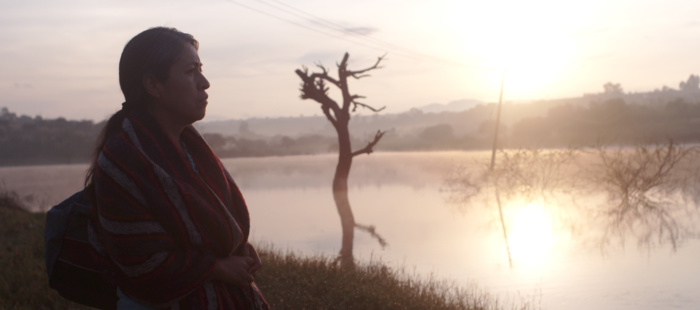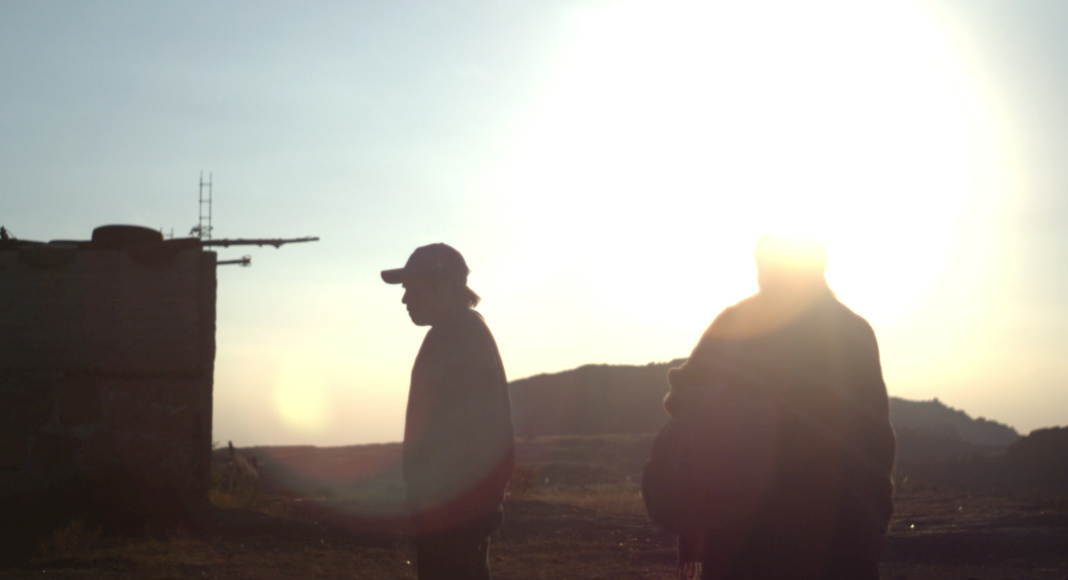- Three factors are likely to prompt further waves of migration from Central to North America:
- Hurricanes Eta and Iota caused devastation in Central America last month, with thousands made homeless;
- Vaccination against Covid-19 has started in the US and Europe, but may take months or years to reach poor communities in Mexico and Central America;
- US President elect Joe Biden plans to unwind Trump’s harsh immigration policies.
- Lia Gomez-Lang takes a close look at Fernanda Valadez’s poignant feature film Sin Señas Particulares (Identifying Features), a tender portrayal of disappearances of migrants on the Mexico-United States border.
- LAB recommends other important films presenting narratives of migration.
- Sin Señas Particulares is screening online and live at ¡Viva! Film Festival in Manchester’s HOME this August 14 and 20 and at Curzon Hoxton on September 15, as part of London’s CASA Festival.
Disappearances of young people in Mexico have grown exponentially in recent years. The latest national statistics have listed more than 73,000 people missing across the country, of whom twenty per cent are children. This has sparked protests and searches for the disappeared. At the centre are mothers, determined to seek answers and action.
Fernanda Valadez’ film Identifying Features follows a mother, Magdalena (Mercedes Hernández), who has not heard from her son Jesús (Juan Jesús Varela) for two months since he left their home in Guanajuato, travelling to the border in an attempt to enter the US illegally. Hope, tension and despair ensue as the audience accompanies Magdalena’s search to discover what has happened to her son. Through this one mother’s quest, Valadez examines shared migrant stories as part of a large-scale social crisis, asking why so many have been lost on this particular journey.
Ahead of the film’s premiere at the BFI London Film Festival, LAB caught up with Fernanda Valadez. Valadez explained to Lia Gomez-Lang how Mexico’s social issues have steered the direction of her films. As a middle-class Mexican, she feels a duty to use her position of privilege to show global audiences the scale of her country’s troubles.
Valadez explained that two important tragedies spurred her to begin work on this film: the two San Fernando massacres in 2010 and 2011, which subjected undocumented immigrants to murder on a mass scale. The two events were a result of cartel warfare and ‘Changed us in Mexico, the way we felt about the country we were living in,’ Fernanda tells LAB. This is the reason Valdez’s character Jesús, like many others, leaves his home in search for a better life, and is lost to the violent landscape across the border.
The main objective of the film, she says, is to engender emotional understanding. She and co-writer Astrid Rondero did not want the audience to be interested in rational terms, but to feel empathy for the characters. To immerse themselves in the place and its people, the director and her all-female crew moved to Guanajuato for a year. Here, the crew scouted different locations, captured each season as it changed and Valadez got to know two parents who had lost a child on a similar path to the protagonists. Perhaps their time in Guanajuato is what helped Valadez to approach such painful issues with tenderness, expressing humanity in many different ways.
Sin Señas Particulares teaches through feeling, creating a harrowing yet deeply rewarding cinematic experience. The natural landscape is used to counteract the pain of the stories taking place within it. Claudia Becerril Bulos creates a dreamlike spectacle through her cinematography, showing that there is beauty, despite the heartache, within this story. As tensions build, the unfamiliar border country becomes more absorbing, captured by longshots of pink sunsets over its vast and desolate terrain.

Valadez engages with violence in unexpected and intriguing ways. Bloodshed is at the core of the events, yet her artistic direction steers focus away from the actual acts of terror. The audience are not shown or told what happens along Magdalena’s journey, they are only offered glimpses as she travels onwards. Open graves, regulated body identification stations and destroyed and desolate towns give indications into the consequences of these acts of violence. Questions are posed and left unanswered: we draw our own conclusions and are encouraged to learn for ourselves about these unimaginable issues. ‘The more you show, the less you feel’ Fernanda states, preferring to show the emotional impacts of events rather than portray the detail of the events themselves.
The concept of ‘border’ is crucial to the film’s meaning. Whether physical or emotional, borders provide limitations: borders separate, prohibit and distance. In the film Magdalena comes across Miguel (David Illescas), a young man deported from the US who returns to find his home destroyed in the aftermath of an attack. As their paths cross and narratives entwine, both become a source of support from each side of the perilous border. Miguel’s story is typical of many migrants who are faced with the brutality of ICE (U.S. Immigration and Customs Enforcement), whereby crossing this space makes them illegal.

As Fernanda highlights, ‘It is something crazy in itself that people are seen as illegal’ and met by systemic structures that lack humanity. Magdalena crosses a symbolic border through her search for the truth, and as she encounters more painful social realities, ‘She understands that the border between being a victim and being a perpetrator is really thin, making it very confusing and very complicated’.
Sin Señas Particulares recognises that the lives lost along the border are often presented as an indistinguishable multitude, and in turn changes the narrative by identifying individuals and their stories. In Fernanda’s words, the message of the film is that ‘In the end, despite our differences, what we share is humanity. People shouldn’t be forced to cross borders just because they want to look for a better future and we have a co-responsibility as a global society to make life more bearable and more just for all of us’.
LAB recommends: films about migration
Darlin by Isabel Castro (2019)
An intimate and poetic short documentary about a young Honduran woman separated from her family by ‘zero tolerance’ immigration policy, and struggling to reunite with them. Watch it here.
Border South by Raúl O. Paz Pastrana (2019)
Fragmented stories from Hondurans crossing through southern Mexico assemble a vivid portrait of the thousands of immigrants who disappear along the trail. This film focuses on immigrants’ resilience, ingenuity, and humor. Find out more.
Nuestro país (Our Country) by Mayra Flores (2017)
This animated short documentary collects anonymous stories of migration to the US and presents them as part of collective American history.Watch it here.
Home in a Foreign Land by Ivannia Villalobos (2016)
A documentary exposing the intricacies of forced migration in Central America, through the stories and dreams both of those who flee and those who stay. Based on the book Exclusion and Forced Migration in Central America: No More Walls (Palgrave Macmillan, 2017) by Carlos Sandoval. Watch the full doc.
Los Lobos (The Wolves) by Samuel Kishi (2020)
The story of an undocumented Mexican family who’ve recently arrived in New Mexico, USA. Lucía’s young sons must learn to fend for themselves whilst she goes out to work. Read the Sounds & Colours review.
Migration on the Move – No human being can be illegal – Francisco Elias Prada (2019)
A moving short photo-video from Francisco Elías Prada and Ángela Rodríguez Torres of LAB partner Ojos Ilegales, Venezuela. The photos convey haunting images of migrants from Central America as they cross Mexico in a desperate attempt to reach the USA. Watch the photo-video here.
Sin Señas Particulares is screening online and in-person at ¡Viva! Film Festival in Manchester’s HOME this August 14 and 20. Tickets here.


